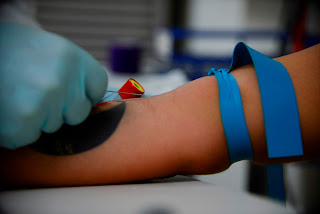Cervical cancer survival may improve by targeting senescent 'zombie' cells
Cervical cancer survival may improve by targeting senescent 'zombie' cells
How well women with cervical cancer respond to treatment and survive correlates with the level of 10 proteins in their blood that also are associated with a "zombie" cell state called senescence, Medical College of Georgia scientists report.
They looked at pre-treatment levels of these proteins in the blood of 565 Peruvian women with stage 2 and 3 cervical cancer, who received standard treatments of internal radiation, called brachytherapy, external radiation or both. They found that women with low levels of the proteins secreted by senescent cells had higher survival rates than those with high levels of these senescence-associated secreted phenotypes, or SASPs. Additionally, they found that brachytherapy, which implants a radiation source close to the cervix, greatly improved survival of patients who had high levels of these SASPs but had little impact on those with low levels. In women with moderate to high blood levels of SASPs, use of a class of drugs called senolytics -- which target these cells for elimination and are under study to improve age-related problems and disease -- as an adjunct therapy could help, says Dr. Sharad Purohit, biochemist in the MCG Center for Biotechnology and Genomic Medicine and the study's first author. Cervical cancer is the most common gynaecological cancer, caused almost exclusively by the human papillomavirus. While it is largely preventable by regular Pap smears that can detect early, precancerous changes, or by vaccines against HPV, survival rates for those who get it have been stagnant for decades, the scientists say.








Comments
Post a Comment